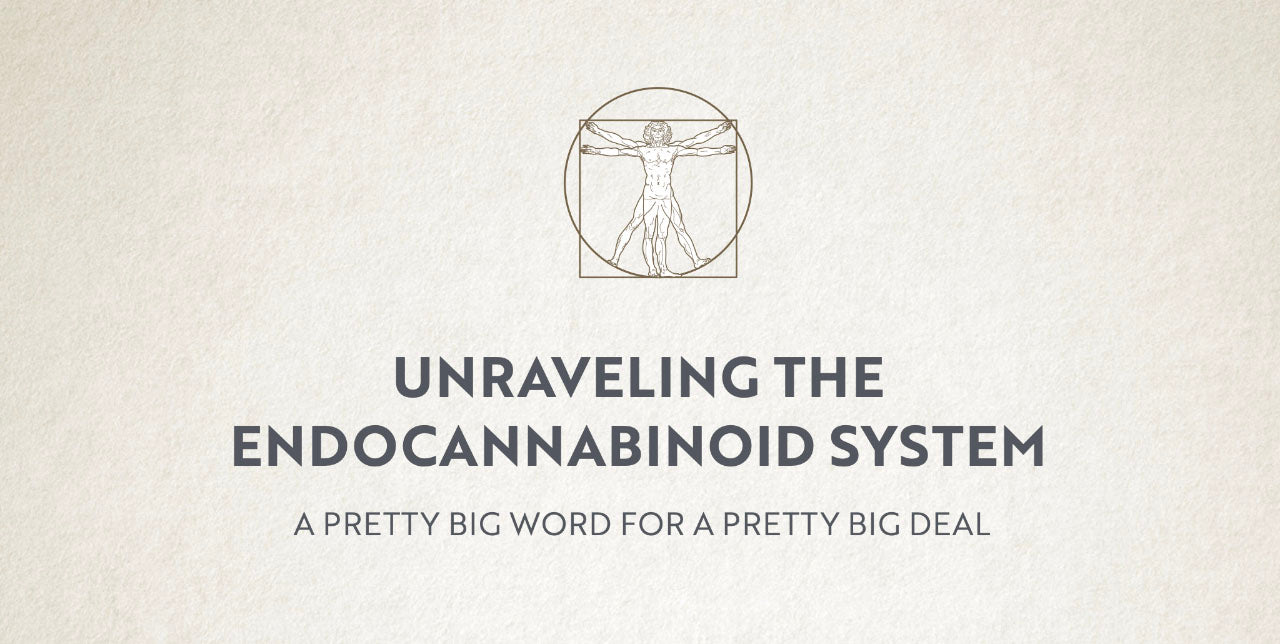Unraveling the Endocannabinoid System

Folks are often amazed by the touted ability of cannabis to treat a large variety of seemingly unrelated conditions.
Initially, I thought these claims were a bunch of bunk. You know, just some crazy theories dreamed up by fun loving hippies as a healthy excuse to smoke a little Acapulco Gold. Upon reflection, I now realize that my view may have been a bit biased.
We’ve now come to understand that all these unrelated conditions are regulated. In part, by the endogenous cannabinoid system (endocannabinoid system, or ECS). The ECS is known to regulate multiple bodily functions that are vital for good health and well-being. The ECS is an extensive network of neurons, neural pathways, receptors, cells, and enzymes that work throughout your body to maintain a state of homeostasis (a stable internal environment despite fluctuations in the external environment). The ESC is essential to life’s basic processes by relaying messages that affect how we relax, eat, sleep, forget, and protect.

The ECS is present in everything from earthworms, reptiles, amphibians, fish, birds, mammals, and people.
It’s believed that this system started developing on Earth around 600 million years ago. So, it’s been around a while. It also happens to be the main system upon which cannabis acts to provide therapeutic benefits. The ECS is a built-in biological system. Because it can also receive, process, and use the medicinal compounds found in cannabis, one could argue that we’re pre-wired to use these compounds. The point is, that if you’re considering incorporating CBD and other cannabinoids into your daily routine, it’s handy to have a basic understanding how this ESC system works.
We can thank the long and colorful history of cannabis for the discovery of the endocannabinoid system.
The ECS story begins with the investigation of the effects of marijuana. It was during this exploration that scientists stumbled upon a web of receptors and molecules in the human body that interacted with the compounds in cannabis. This was an unexpected revelation. It sparked curiosity and set the wheels in motion for an amazing discovery that altered our perception of how our bodies maintain balance and health.
Back in the 1960’s researchers isolated and identified THC as the psychoactive compound in cannabis responsible for its mind-altering effects. This discovery piqued the interest of scientists. They wondered why the human body had receptors that responded to a plant compound.
In 1988, the first cannabinoid receptor, known as CB1, was discovered by researchers Allyn Howlett and William Devane. The existence of CB1 receptors in the brain and central nervous system provided the first solid evidence that our bodies have a built-in system to interact with cannabinoids like THC.
The 1990’s, marked a significant leap in our understanding of the ECS. In 1992, scientists discovered the first endocannabinoid, anandamide. It is named after the Sanskrit word "ananda," which means bliss or joy. As it turns out, anandamide is an endogenous (internal) cannabinoid naturally produced by the body. It binds to CB1 and CB2 receptors, influencing various physiological functions. Shortly after anandamide's discovery, the CB2 receptor was identified. Unlike CB1 receptors, CB2 receptors are mainly found in the immune system and peripheral tissues. This suggests a broader role for the ECS in maintaining health.
The ECS is important to homeostasis and the mitigation of disease.
The ESC helps your body maintain homeostasis through retrograde (or backward) signaling. Retrograde signaling is a form of intracellular communication that inhibits immune response, reduces inflammation, relaxes muscles, lowers blood pressure, dilates bronchial passages, and normalizes overstimulated nerves. For example, it’s what happens when the ECS tells your immune system to cool down after a fever has been extinguished.
To explain, let’s look at a specific bodily system, the immune system. In our example, your body becomes faced with an invading virus. Your immune system combats the invader by kicking on like a furnace. Turning up the thermostat produces a fever. This fever is needed to destroy the invading virus by cooking it. After the invading virus has been wiped out, the ECS signals the immune system to cool down, thus restoring homeostasis. When the feedback loop gets out of control, the immune system can overreact to stress or mistake its own body for a bacterial invader. This is how autoimmune diseases or inflammatory disorders can develop.
You can think of the ECS as a director who’s constantly multitasking and adjusting the complex network of molecular thermostats that control our physiological cadence.
Interestingly, the cannabinoids in hemp and cannabis stimulate the same receptors (CB1 and CB2) that our own natural compounds do. These cannabinoids can serve as a substitute “retrograde messenger” that mimics what our ECS does when trying to maintain balance. Therefore, cannabis a has unique synergy with our own bodily processes and allows it to work as a natural medicine. It’s important to remember that everybody and every ECS is unique. Cannabis-based treatments and supplements must be tailored to the individual for best results.

The ESC is a team player.
The ECS is not a self-contained system. It’s more of a collaborator in that it interacts robustly with other non-cannabinoid systems like the endorphin system, the immune system, and the vanilloid system (responsible for changing pain from acute to chronic). By regulating these other systems, the ECS manages inflammation, pain, bone health, formation of new nerve cells, fat, and hormone balance. As we’ve mentioned, the ECS is equipped with specialized receptors to pick up cannabinoids. These receptors, called CB1 and CB2 receptors, are located all over the body. Many tissues contain both CB1 and CB2 receptors, where they carry out different actions.




